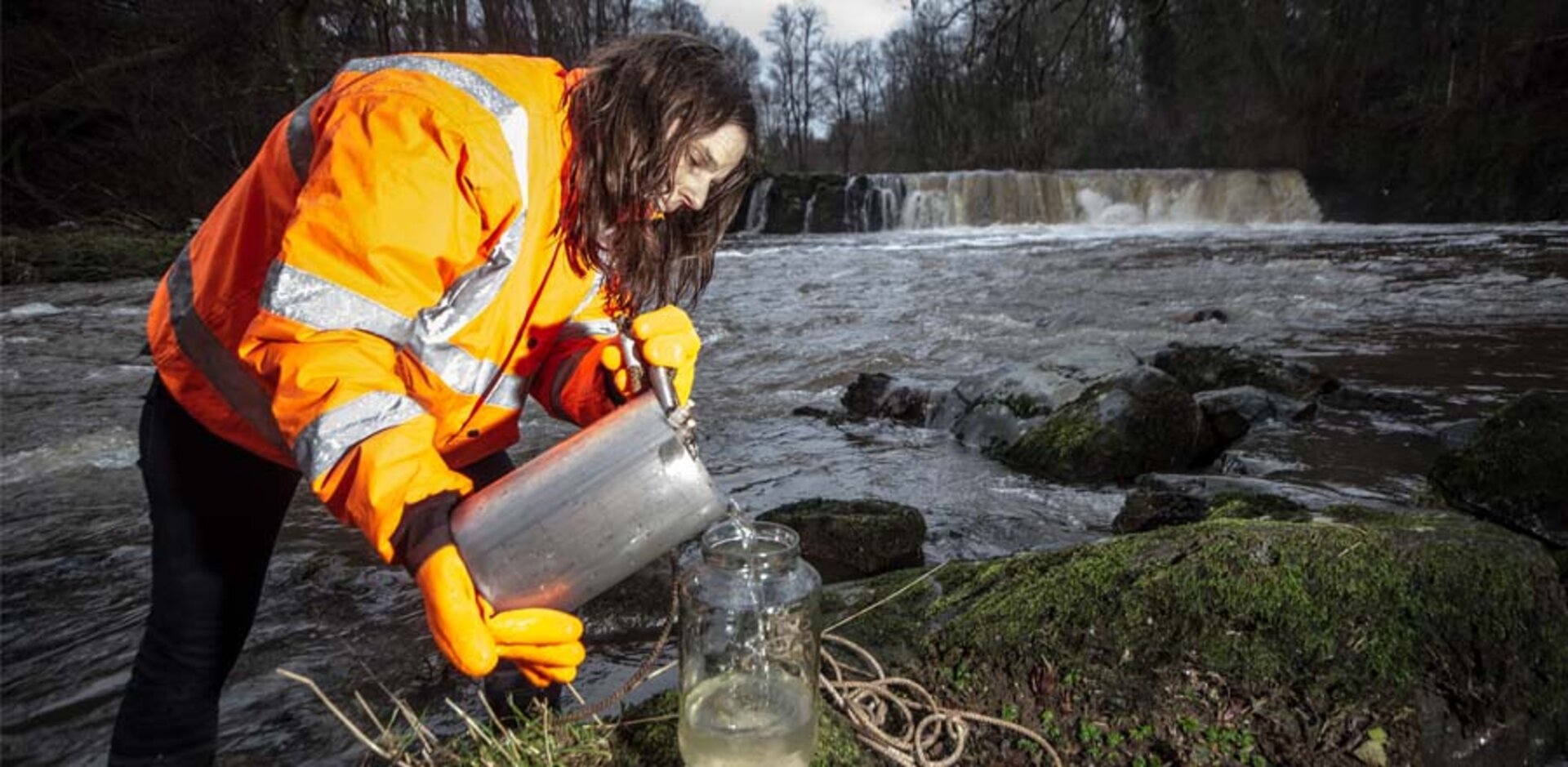Research looks at pharmaceutical pollution of Scotland’s water environment

A study carried out by researchers at Glasgow Caledonian University (GCU) delivered the first national assessment of pharmaceutical pollution of Scotland’s water environment.
GCU, along with the James Hutton Institute and the Environmental Research Institute (University of the Highlands and Islands), will use the results to promote practical actions to reduce this globally recognised public health and environmental issue.
Pharmaceuticals (medicines) enter the water environment when people taking medicines go to the toilet (between 30-100% of a dose is excreted) and when partially used or expired medicines are inappropriately flushed down the toilet instead of being returned to a pharmacy for proper disposal.
Information on 60 medicines was added to a database of over 3,000 data points representing 11 ‘types of water’ – such as water in the environment, influent wastewater and treated wastewater. The study, commissioned by the Centre of Expertise for Waters (CREW) to support the work of the One Health Breakthrough Partnership, combined published and unpublished academic data with monitoring data from Scottish Water and SEPA.
Lead researcher Dr Karin Helwig said: “Pharmaceuticals are designed to have an effect on humans, so it’s no surprise that they affect water organisms, too, and that could disturb the balance in ecosystems. There is still much we don’t know about how serious these risks are, but, if we value our environment, it makes sense to try to reduce this kind of pollution as much as possible. Different organisations collect monitoring data for their own different purposes, so it was a real testament to partnership working that we were able to collate everything together and get a clearer picture of this area of emerging concern for the Scottish environment.”
The study found that nine medicines, including ibuprofen (an anti-inflammatory painkiller) and antibiotics, may pose higher risks of ecotoxicity and antimicrobial resistance (AMR), although the authors emphasise that monitoring is often carried out at higher risk locations. Dangers to human health are extremely unlikely, but the findings do illustrate levels of pharmaceuticals in the environment.
Wastewater treatment plants were not initially designed to treat pharmaceuticals and are unable to treat some pharmaceuticals. So, tackling this complex issue requires “up-stream” actions.
The One Health Breakthrough Partnership (OHBP), which was involved in the design and oversight of this study, is a cross-sector initiative bringing together key stakeholders to develop and implement sustainable interventions in healthcare.
NHS Highland lead and OHBP co-founder, Sharon Pfleger, Consultant in Pharmaceutical Public Health, said: “It is important to try to prevent or reduce the impact of pollution by medicines as much as possible rather than trying to deal with the problem. That’s why the OHBP is taking an ‘up-stream’ public health approach, ensuring that prescribers and the public understand that medicines do pollute our waters and how they can help, developing guidance for prescribers on more eco-friendly choices of medicines, promoting the use of green and blue spaces to help physical and mental health instead of using medicines and ensuring that people know how to correctly dispose of unused or unwanted medicines.”
The OHBP (Scottish Water, SEPA, NHS Highland, and the Environmental Research Institute-University of the Highlands and Islands) is committed to working with partners to develop solutions and progress the recommendations put forward in this report. Together the OHBP aims to drive research and innovation and influence policy in Scotland to achieve optimal health for people, animals, plants and the environment.
This study recommends that further environmental research be done for areas of the country where few data are available, and, similarly, for groundwater, lochs, and coastal and estuarine waters. The study will be used by researchers, environmental regulators, the water industry, and the health service as a baseline to assess whether, and to what extent, future interventions and OHBP activities help to reduce pharmaceutical pollution.
